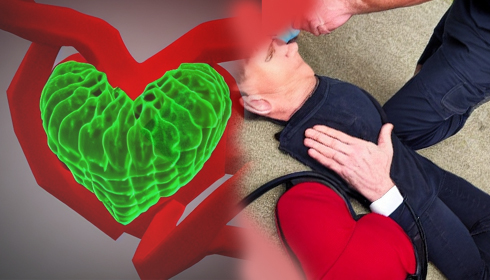
New US study finds automated external defibrillators remain underutilised during cardiac arrests
In a recent study conducted by researchers at UT Southwestern Medical Centre, it was revealed that automated external defibrillators (AEDs) are not being fully utilised during cardiac arrest episodes, despite laws mandating their presence in certain high-risk areas. These areas include athletic facilities, where the timely use of AEDs can potentially save lives by restoring the heart's normal rhythm.
The study, published in JAMA Internal Medicine, discovered that state mandates have not significantly improved the use of AEDs by bystanders at recreational facilities, such as gymnasiums, fitness centres, campsites, beaches, public parks, and trails. Even in states with laws requiring AED availability, these life-saving devices were used in less than 20% of out-of-hospital cardiac arrest incidents.
Dr Ahmed A. Kolkailah, the lead author of the study, emphasised the critical value of AEDs, noting that almost half of the cardiac arrest victims in their research had an initial shockable rhythm, which could be potentially fatal but restorable with prompt AED use. Despite this, bystanders utilised AEDs in fewer than 20% of cases, showing a consistent pattern across states, regardless of the presence of AED laws.
The study, analysing data from the Cardiac Arrest Registry to Enhance Survival (CARES) between 2013 and 2021, included over 9,000 cases at recreational facilities in states both with and without AED laws. Surprisingly, the study found no significant difference in survival rates between the two groups.
In states with AED mandates, AEDs were used in 19% of cases, with a median survival rate to hospital admission of 44.5% and a discharge rate of 31%. In states without mandates, AEDs were used in 18.2% of cases, with similar survival rates of 45% to hospital admission and 28.4% to discharge.
Senior author Dr. Saket Girotra, an Associate Professor in the Division of Cardiology, stressed the need for collaborative efforts between medical personnel and athletic and recreational facility staff to enhance AED awareness and usage. He suggested initiatives such as ensuring the availability of AEDs with clear signage, dispatcher guidance during emergencies, and ongoing education on the proper use of AEDs.
Despite the presence of AED mandates in various states, the study implies that legislative measures alone may not be sufficient, emphasising the importance of collective efforts to improve bystander AED use. The researchers recommended strategies such as easily accessible AEDs, dispatcher guidance during emergencies, and continued education on AED use.
The study also highlighted the need for increased awareness and education at recreational facilities, where non-medical bystanders are often the first to respond in emergencies. The researchers hope that these findings will prompt action to make AEDs more readily available and increase public awareness about their proper use.